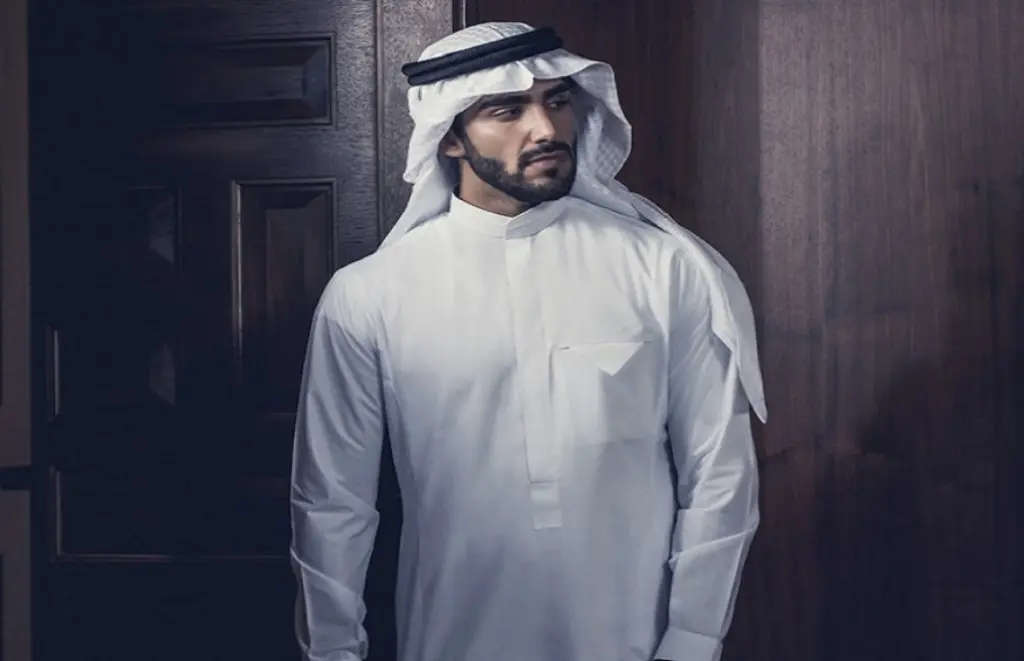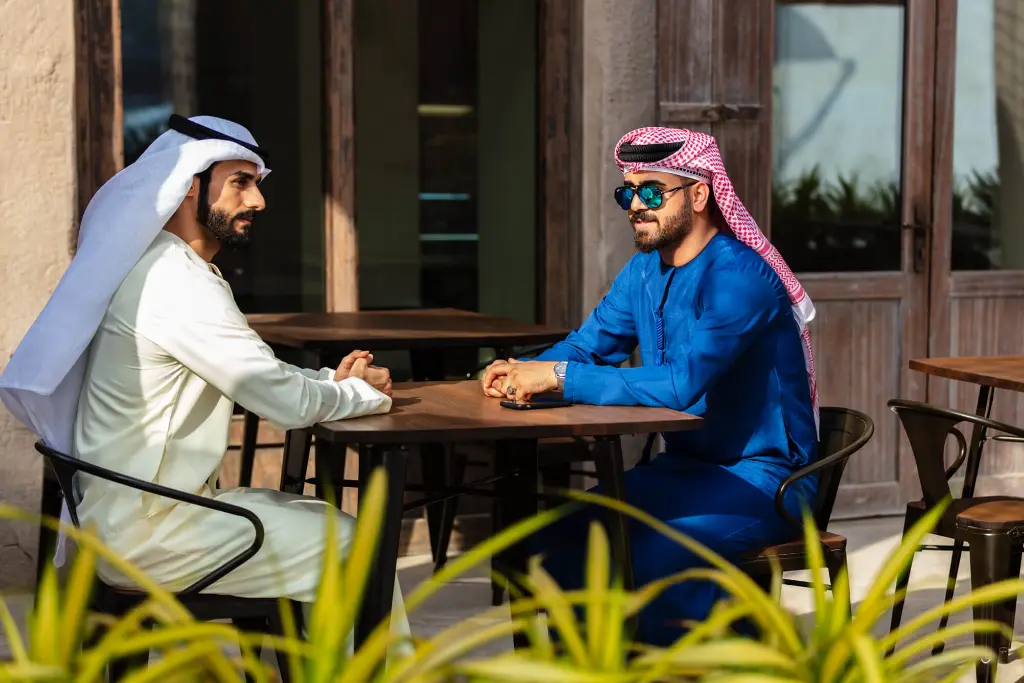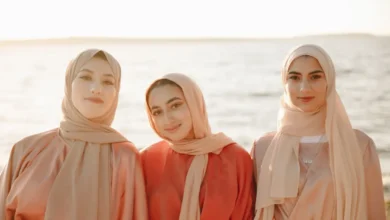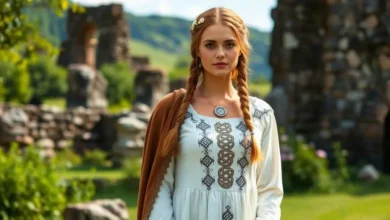Have you ever seen a man gracefully moving in a long, flowing robe and wondered about its origins and significance? Chances are you’ve encountered a dishdasha, sometimes known as a thawb or kandura, a traditional garment deeply embedded in the cultural fabric of the Arab world.
This isn’t just any piece of clothing; it’s a symbol of heritage, an embodiment of comfort, and a statement of style. This article will delve into the world of dishdashas, exploring their history, purpose, variations, and enduring appeal.
The History of the Dishdasha: A Journey Through Time

The dishdasha’s roots run deep into the Arabian Peninsula, predating Islam. Historically, the harsh desert climate necessitated clothing that offered both protection from the sun and freedom of movement. The loose-fitting, ankle-length design proved ideal.
It’s important to remember that early forms of these robes were often simple and made from basic materials like cotton or wool, reflecting the resources available at the time. Over centuries, the design has evolved while retaining its core functionality.
See also Gamsbart: A Traditional Alpine Ornament with a Rich History
Gamsbart: A Traditional Alpine Ornament with a Rich HistoryEvolution and Cultural Diffusion
With the spread of Islam, the dishdasha, or variations of it, became more widely adopted across the Middle East and parts of Africa. While the basic design principles remained similar, subtle regional variations emerged, each reflecting local traditions and preferences. You’ll notice differences in sleeve styles, collar designs, and embroidery work from one country to another. This cultural diffusion showcases the dishdasha’s adaptability while solidifying its status as a symbol of shared heritage.
Dishdashas: More Than Just Clothing
Beyond its practical utility, the dishdasha holds deep cultural significance. In many Arab cultures, it is not simply clothing but a marker of identity and pride. Wearing a dishdasha can represent a connection to one’s lineage, religion, and community. Let’s examine the different layers of its cultural importance:

Symbolism of Modesty and Respect
The loose, flowing nature of the dishdasha aligns with the Islamic concept of modesty, particularly for men. It avoids overly revealing or figure-hugging styles, reflecting a sense of decorum and respect. When worn properly, a dishdasha exudes dignity and conveys a sense of cultural rootedness.
A Daily Garment and Festive Attire
Dishdashas are versatile. They can be worn daily for work, family gatherings, or relaxing at home, but they are also a staple for religious holidays, weddings, and other formal occasions. This versatility speaks to their practicality and cultural relevance. The materials and embellishments used can differ according to the occasion, highlighting the garment’s adaptability.
See alsoConnection to Religious Identity
In predominantly Muslim communities, the dishdasha often signifies religious identity. It’s a common sight at mosques and during religious festivals, indicating a sense of belonging and adherence to religious practices. While not an explicit religious requirement, its association with religious contexts makes it a culturally charged garment for many Muslim men.
The Anatomy of a Dishdasha: Understanding the Design
While dishdashas may appear simple at first glance, they possess a sophisticated design with specific elements contributing to their overall look and functionality. Let’s break down the different components:
The Cut and Fabric
A key characteristic of a dishdasha is its loose and flowing cut. The garment typically extends from the shoulders down to the ankles, providing ample coverage and freedom of movement. It’s usually made from lightweight fabrics such as cotton, linen, or synthetic blends, which make them comfortable for warm climates. The fabric choice can vary depending on the season and occasion.
Sleeves and Collar Styles
Sleeve styles range from wide, bell-shaped sleeves to narrower, more fitted ones. The cuff can also differ, with some being simple and others having buttons or subtle embroidery. The collar is another area of variation. Some dishdashas have a traditional, high-collared look, while others have a more open, mandarin-style collar. Each variation contributes to the overall style and reflects the wearer’s preferences or the region’s traditions.
Embellishments and Details
While many dishdashas are simple and plain, some are adorned with subtle embellishments, including embroidery along the collar, cuffs, or placket. The type of embroidery, the colors used, and the intricacy of the patterns often indicate the wearer’s personal taste or even their region of origin. Minimalist designs are common, but formal dishdashas might incorporate more elaborate details.
Regional Variations of the Dishdasha
As mentioned earlier, dishdashas aren’t monolithic. There are significant regional variations, each with its distinct features. Exploring these differences sheds light on the rich diversity within Arab cultures:
The Saudi Thobe
The Saudi Thobe is known for its streamlined design, often featuring a high, buttoned collar and a crisp look. It is usually made of high-quality cotton and is available in a range of colors, though white is the most common, especially for formal wear. This style is a hallmark of formal elegance and respect.

The Emirati Kandura
The Emirati Kandura tends to have a more relaxed fit compared to the Saudi Thobe. It often features a tasseled string (tarboosha) hanging from the collar, which adds a touch of character. The colors used can be more varied, but lighter hues are generally preferred for warmer weather.

The Qatari Thobe
The Qatari Thobe is recognized by its longer sleeves and a simpler, less structured collar. It often features subtle embroidered details and is known for its comfortable and elegant design. The fabric used tends to be of high quality, emphasizing a refined sense of style.

Omani Dishdasha
The Omani Dishdasha is usually collarless and often has a decorative string and a small, embroidered trim, often in a distinctive color like orange. This style is unique to Oman, distinguishing it from the other variations.

Dishdashas in the Modern World: Balancing Tradition and Trends
In an era of rapidly changing fashion trends, the dishdasha has retained its prominence while adapting to modern influences. Today, many Arab men continue to wear dishdashas as a daily expression of their identity, but some have embraced contemporary modifications. Let’s explore the delicate balance between tradition and modernity.
Contemporary Adaptations
While the traditional design remains popular, contemporary dishdashas are experimenting with new fabrics, colors, and subtle design elements. Some designers are incorporating western-style tailoring for a more fitted look while maintaining the overall silhouette. There is a growing interest in fusing traditional styles with modern trends, resulting in an evolving fashion landscape.
The Enduring Appeal of Tradition
Despite contemporary adaptations, the core elements of the dishdasha—its comfort, modesty, and cultural significance—remain its most compelling features. For many Arab men, wearing a traditional dishdasha is a way of connecting to their heritage and expressing pride in their cultural identity. This deep-rooted connection ensures that the garment will continue to be an integral part of Arab fashion for generations to come.
The Global Perspective
The appreciation for the dishdasha extends beyond its cultural origins. As global fashion becomes more diverse, people worldwide have come to recognize the elegant and comfortable nature of this traditional garment. While it might not be common wear in other parts of the world, there’s a growing appreciation for its aesthetic value and historical significance. This helps to bridge cultural understanding and encourages respect for diverse expressions of fashion.
Choosing the Right Dishdasha: A Guide for the Wearer
For those looking to embrace the dishdasha, either within or outside its traditional context, understanding how to choose the right garment is essential. Here’s a guide to help you navigate the selection process:

Understanding the Fabric Options
The fabric of a dishdasha greatly affects its comfort and suitability for different climates. Lightweight cottons and linens are ideal for warm weather, offering breathability and ease of movement. Heavier fabrics like wool or thicker synthetic blends may be preferred for colder temperatures. The fabric’s quality also impacts its longevity and how well it drapes on the body.
Considering the Occasion
The formality of an event should guide your dishdasha choice. For everyday wear, simpler, less adorned garments may suffice. For formal occasions, consider dishdashas made from high-quality fabrics with subtle embellishments. Remember to respect cultural nuances when selecting a garment for religious or community events.
Finding the Perfect Fit
A well-fitting dishdasha is paramount. It should be loose enough to allow for comfortable movement but not so large that it appears ill-fitting. The length should reach the ankles, but the sleeves and collar should not restrict movement. It is advisable to try on a few different sizes or consult with a tailor to ensure the perfect fit.
Exploring Color Options
While white is a standard color for dishdashas, especially during formal and religious occasions, there’s a growing variety of colors available today. Choose colors that complement your skin tone and personal style while considering the event you’ll be attending. In many contexts, lighter hues are preferred in warmer weather, while darker shades might be suitable for cooler climates or more casual settings.
Conclusion: The Timeless Appeal of the Dishdasha
The dishdasha is more than just clothing; it’s a testament to cultural heritage, a symbol of modesty and respect, and a comfortable and stylish garment. From its origins in the Arabian desert to its evolution in modern fashion, the dishdasha has retained its relevance and appeal.
Whether it’s the traditional, crisp white thobe of Saudi Arabia or the more relaxed and embellished kandura of the UAE, each variation tells a story of cultural pride and identity. As global appreciation for diverse styles grows, the dishdasha will undoubtedly continue to be a vital part of men’s fashion, reflecting both the beauty of tradition and the dynamism of contemporary trends.
Embracing the dishdasha means appreciating a rich history and a comfortable, stylish garment with a deep sense of meaning.



